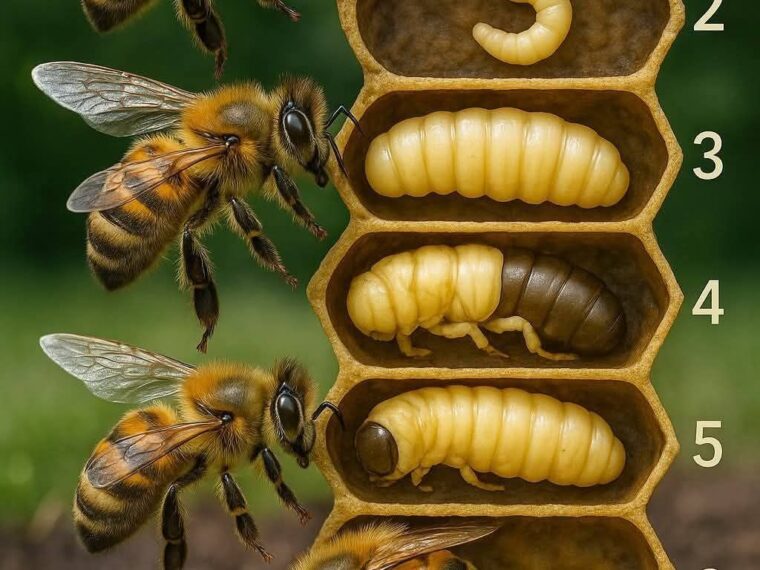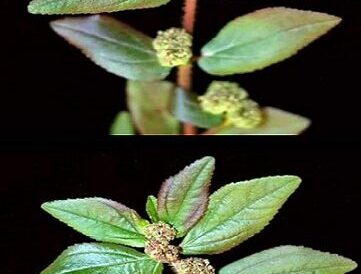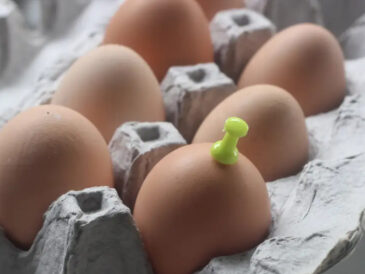When you think of bees, honey and buzzing flowers might come to mind. But behind their tiny size is a surprisingly complex and efficient life cycle. Every bee plays a vital role in keeping its hive running smoothly—and it all starts with a nearly invisible egg.
In this guide, you’ll follow the complete journey of a bee’s life, from the moment it’s laid to the day it takes on duties as a worker.
Stage 1: The Egg
Everything begins with the queen bee. She’s the only one in the colony capable of laying eggs, and during peak seasons, she can lay up to 2,000 each day.
Each egg is laid inside a wax cell, part of the hive’s hexagonal comb structure. These tiny eggs are shaped like a grain of rice and are barely visible to the naked eye. They remain in this form for about three days before hatching.
What Makes This Stage Unique?
- The queen decides whether an egg will become male or female.
- Fertilized eggs turn into female bees (workers or queens).
- Unfertilized eggs develop into male bees (drones).
- This allows the queen to carefully manage the population and roles within the hive.
Stage 2: The Larva
After three days, the egg hatches into a larva. At this point, the bee resembles a small white grub and has no legs, wings, or eyes. It can’t move or care for itself, so worker bees step in to feed and tend to it.
During the first few days, larvae are fed royal jelly, a highly nutritious substance produced by worker bees. This rich food helps the larva grow extremely fast.
Feeding Details
- Days 1–3: The larva receives only royal jelly.
- Day 4 onward: It switches to a mix of nectar and pollen, known as bee bread.
In just six days, the larva grows significantly—sometimes doubling in size within an hour. Throughout this period, workers continuously feed and clean the larvae to ensure healthy development.
Special Case: Future Queens
Some larvae are fed only royal jelly for their entire development. This diet triggers genetic changes that allow them to grow into queen bees instead of workers.
Stage 3: The Pupa
Once the larva reaches full size, worker bees seal its cell with a wax cap. Inside the sealed cell, the larva enters the pupal stage.
This is when one of the most dramatic transformations in nature takes place. Over the next 12 days, the soft-bodied larva changes into a fully formed adult bee. Legs, wings, eyes, antennae, and a hard exoskeleton begin to form.
Why This Stage Is So Important
- The pupa does not eat or move.
- During metamorphosis, internal and external body parts reorganize into their adult form.
- After the transformation is complete, the new bee chews through the wax cap to emerge.
This process is known as complete metamorphosis, and it’s similar to what butterflies experience.
Stage 4: The Adult Bee
When the bee emerges, it’s fully formed and ready to begin life in the hive. If you’re a female worker bee, your duties begin almost immediately.
The Life of a Worker Bee
Your first tasks involve cleaning, feeding larvae, and tending to the queen. As you get older, your responsibilities change:
- Building new wax comb
- Storing nectar and pollen
- Guarding the hive entrance
- Foraging for nectar and pollen outside the hive
Worker bees are incredibly versatile and make up the majority of the hive’s population. In the summer, they live about six weeks. During winter, they can survive longer—up to a few months—since they don’t wear themselves out foraging.
The Role of Drones
If you were born from an unfertilized egg, you’d become a drone, a male bee.
Drones have a single purpose: to mate with a queen from another hive. They don’t collect food, protect the hive, or care for young. After mating, they die, making their lifespan short but essential to reproduction.
During colder months or times of low food supply, drones are often forced out of the hive by workers.
The Queen Bee’s Life
If your larval stage consisted entirely of royal jelly, you’d emerge as a queen bee.
Your job would be to:
- Lay eggs continuously, especially in spring and summer.
- Regulate the behavior of worker bees using pheromones.
- Maintain order in the colony.
A queen can live several years, much longer than workers or drones. If the hive needs a new queen, workers will select a few larvae and feed them royal jelly to trigger the transformation.
Why Bee Life Cycles Matter
Understanding how bees grow and function gives you deeper insight into the delicate balance of nature. Bees are essential to food production, biodiversity, and the environment.
When you know how bees develop and work together, you’re more likely to appreciate and protect them.
Bees Are Critical to Your World
- They pollinate about one-third of all crops we eat.
- Their decline due to habitat loss, pesticides, and climate change threatens ecosystems and food security.
- Educating yourself and others about their lifecycle can help support conservation efforts.
Take Action to Support Bees
Now that you know how bees grow and contribute to their hives, it’s time to take action. Whether it’s a small garden or a community effort, your support makes a difference.
Here’s What You Can Do:
- Plant flowers that bloom throughout the growing season.
- Avoid using pesticides or herbicides that harm pollinators.
- Support local beekeepers by buying honey and beeswax products.
- Spread awareness about bee conservation through schools or social media.
Stay Connected to Nature
Want to learn more about bees, wildlife, and how you can protect your local ecosystem?
Subscribe to updates, explore related articles, and take the first step toward creating a pollinator-friendly space in your backyard. The more you know, the more you can do to make a lasting impact.
Every small action counts—start today.




